It was June 5, 1833, when Charles Babbage first met his “enchantress of numbers.”1 The seventeen-year-old had been attending the soirée he had hosted as a part of her first London season and had been introduced to him by her mentor Mary Somerville. It was at these soirées that Charles displayed an early model of his Difference Engine alongside a silver dancing ballerina automaton. While most of his guests were enthralled by the ballerina, Babbage noted that the young Ada Lovelace was enchanted by the large brass calculating machine. The machine hosted tall vertical shafts that contained stacked notched disks, each notch representing a number from zero to nine and each disk representing a value of a decimal place higher than the one below it. Ada was amazed, later going on to describe it as the “gem of all mechanism.”2 Over the next few years, Ada closely followed the development of the Difference Engine. She read every article available to her regarding the machine and began her correspondence with Babbage, discussing the articles together.3
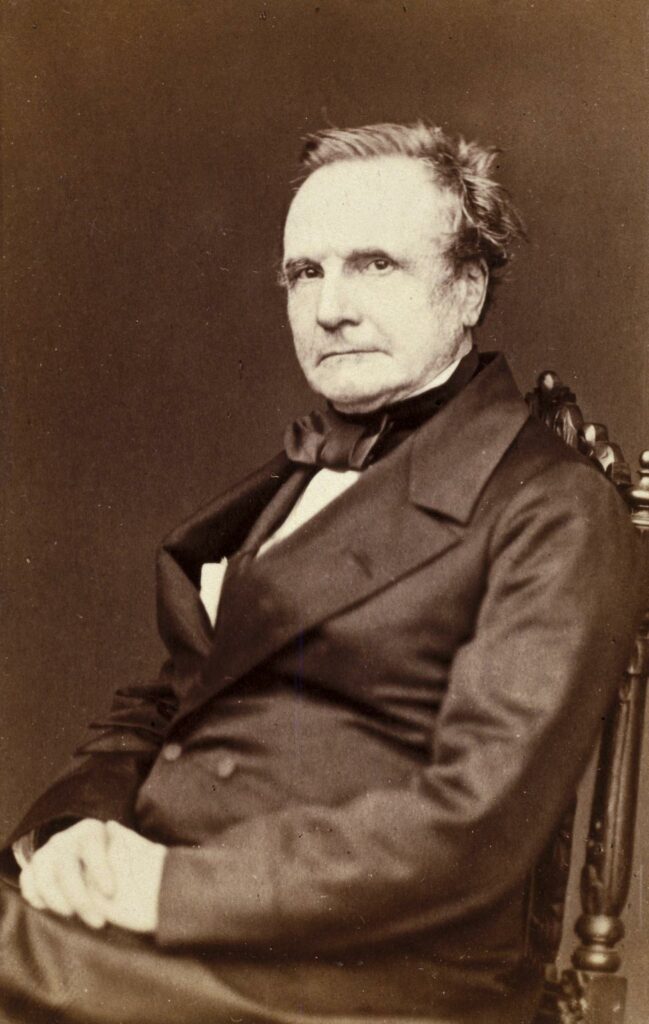
While everything was looking up for Babbage during the beginning of the development of the Difference Engine, it did not take long for things to plummet. Babbage received grants from the government totaling around £17,000, but because this support was erratic and uncertain, Babbage frequently had to advance money to his mechanical engineer, Joseph Clement, out of his own pocket. In 1833, shortly after a portion of the machine had been put together, Babbage and Clement had a dispute over payments. Following the dispute, Clement ceased working on the Difference Engine altogether, laying off his assistants and appropriating all drawings and parts, leaving Babbage with only the part that was assembled.4 Nine years later, the government made the decision to terminate the project, leaving Babbage bitter and resentful.5 However, Babbage was not just sitting around waiting for the government’s decision on the continuation of support for the Difference Engine. In 1834, he began to conceive a machine that would make the Difference Engine pale in comparison. It would become the machine that would solidify his place in history: the Analytical Engine.6
According to Babbage, the Analytical Engine would have none of the limitations that the Difference Engine had. It was to be a general computing machine able to string together various operations through the use of punch cards. There were to be two types of cards: operation cards to direct the nature of the operations performed, and variable cards to direct the use of variables. First, one would string together a set of operation cards, and then a string of variable cards were strung together in the order they were to be called upon. Each operation card required three variable cards, two to store the variables and constants required for the operation and one to store the result. Once the cards were fed into the mill, the Analytical Engine would execute the functions in the correct order and print the final result using a printing apparatus. If the machine were to encounter a problem, the bell attached would ring and the machine would stop.7 Because of the earlier failure with the Difference Engine, the government refused to support Babbage in his latest endeavor. He was able to secure some private donations but remained unable to accumulate a sufficient amount to fund his project. Babbage needed a partner to help him with the project and funding, and Ada made the ideal candidate.8
Since they had last met, Ada continued receiving an excellent education in mathematics and in the sciences, being tutored by the best of the best, courtesy of her mother, Lady Annabella Byron, a mathematician herself.9 Lady Annabella did everything she could to steer her away from all that her father stood for, as she vehemently hated her ex-husband, the romantic poet Lord Byron. Any and all things related to passion, romance, and poetry were not allowed, and Ada was not allowed to see a portrait of her father until she was twenty. However, Ada was romantic by nature and chose to combine this with her interest in math and science. This led to her being able to write eloquently about complex concepts, using metaphors to provide a better understanding to both herself and others.10 This made her both the perfect partner and interpreter for Babbage and his analytical engine.
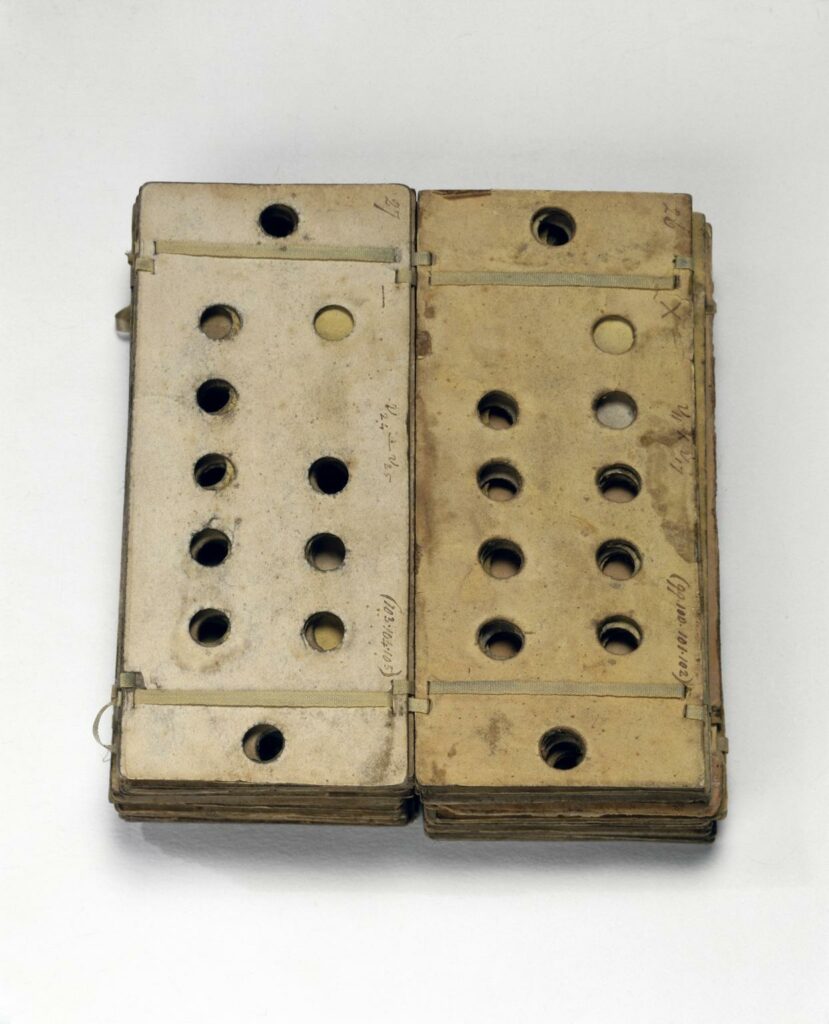
Together with Ada, Babbage continued to work on his Analytical Engine, going through almost thirty plans and modifications in total.11 By 1840, they had successfully built a part of the Analytical Engine, finally having something physical to present to the public.12 That same year, Babbage made his first and only public presentation of the Analytical Engine in Turin, Italy. Among the group of mathematicians and engineers that Babbage presented to was the future prime minister of Italy, Luigi Federico Menabrea. Menabrea, a mathematician himself, published a paper in French with the notes he took during the presentation, as well as some notes from Babbage, entitled “Sketch of the Analytical Engine.” In the paper, Menabrea primarily focused on the mathematical groundwork of the Difference and Analytical Engines. He recognized the Analytical Engine’s ability to compute any algebraic formula as long as the punch cards were put in appropriately, describing the cards as “another form of analytical notation.”13 In 1843, the now twenty-seven-year-old Ada read Menabrea’s paper on the Analytical Engine and decided to translate it into English.14 After finding out about Ada’s plan to translate the paper, Babbage encouraged Ada to add annotations of her own. Following Babbage’s suggestion, Ada started to work on what are now referred to as her “notes.”15
Consisting of seven notes labeled A through G, Ada’s additions were over twice as long as the original paper. Ada placed significant importance on the programmability of the Analytical Engine, writing “The distinctive characteristics of the Analytical Engine…is the introduction into it of the principle which Jacquard devised for regulating, by means of punched cards, the most complicated patterns in the fabrication of brocaded stuffs…. We say most aptly that the Analytical Engine weaves algebraical patterns just as the Jacquard-loom weaves flowers and leaves.”16 She went on to distinguish the Analytical Engine as being distinctly different from the machines that had come before it. Regarding the Analytical Engine’s potential, she was the first to figure out that one could use symbolic notations to have the Analytical Engine win games and compose music, writing “Supposing, for instance, that the fundamental relations of pitched sounds in the science of harmony and of musical composition were susceptible of such expression and adaptations, the Engine might compose elaborate and scientific pieces of music of any degree of complexity or extent.”17 However, Ada concluded that the machine could not think, as it “has no pretensions whatever to originate anything.”18 This sentiment would later be named “Lady Lovelace’s Objection” by Alan Turing in 1950.19 The rest of her notes were devoted to programming the Analytical Engine, ending her notes with a program for computing Bernoulli numbers. This was by far the most complex program written for the Analytical Engine and the crown jewel of her notes, demonstrating the conditional branching capability of the Engine and utilizing two loops. While compiling her notes, Ada discussed them often with Babbage, relying on Babbage to confirm her accuracy, with Babbage often surprised by her insights. Her translation and notes were published in September of 1843.20
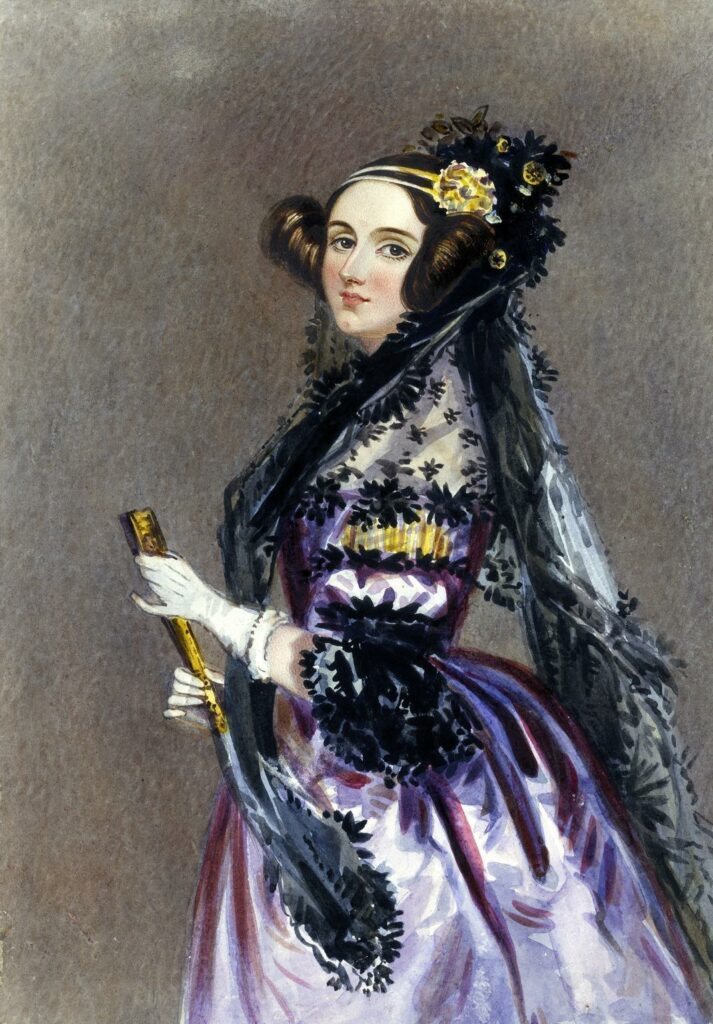
However, the entirety of the Analytical Engine was never built as funds had run dry. In a stint to obtain more money for the project, the two devised a plan to win money by gambling on horses, using math to calculate the odds of winning. This, unsurprisingly, never panned out, only leading to the loss of even more money.21 Unfortunately, the clock was ticking and Ada’s health declined after 1843, leading to her death on November 27, 1852 from what was most likely uterine cancer.22 Babbage subsequently lost heart and remained extremely bitter at the government for not funding the Analytical Engine and bitter at his own failure.23 Both Charles Babbage’s and Ada Lovelace’s work was left behind in the forward march, slowly being covered up by the sands of time. Their work remained obscure until 1953, when Bertram V. Brown brought the public’s attention to their work.24
Examining the work of Babbage and Lovelace in the era of computers allows us to appreciate the full genius of their work. Today, they are rightfully referred to as the father of the computer and the mother of computer programming. Had the Analytical Engine been fully realized, it would have been the very first computer, and a general-purpose computer similar to the Harvard Mark I.25 There has been great interest in building Babbage’s machines, with the Difference Engine No. 2 being built successfully in 1991 by Barrie Holloway and Reg Crick of the London Science Museum according to Babbage’s instructions.26. While the Analytical Engine has yet to be built, an initiative to build a version called Plan 28 was started in 2010 by British programmer and author John Graham-Cumming.27 As for Ada, the Department of Defense renamed a high-level computer language after her in 1980. In addition to this, she has become a celebrated figure in women’s science with Ada Lovelace Day being celebrated every October since 2009.28 Babbage’s Analytical Engine and Ada’s “notes” continue to enchant people to this day.
- Eugene Eric Kim and Betty Alexandra Toole, “Ada and the First Computer,” Scientific American 280, no. 5 (May 1, 1999): 76, https://doi.org/10.1038/scientificamerican0599-76; Claire Cain Miller, “Ada Lovelace,” The New York Times, March 19, 2018, Gale Literature: Book Review Index, 2. ↵
- Richard Holmes, “Enchantress of Abstraction: Richard Holmes Re-Examines the Legacy of Ada Lovelace, Mathematician and Computer Pioneer,” Nature 525, no. 7567 (September 3, 2015): 30, 31; Dorothy K. Stein, “Lady Lovelace’s Notes: Technical Text and Cultural Context,” Victorian Studies 28, no. 1 (October 1, 1984): 36-38. ↵
- Eugene Eric Kim and Betty Alexandra Toole, “Ada and the First Computer,” Scientific American 280, no. 5 (May 1, 1999): 76, https://doi.org/10.1038/scientificamerican0599-76. ↵
- Dorothy K. Stein, “Lady Lovelace’s Notes: Technical Text and Cultural Context,” Victorian Studies 28, no. 1 (October 1, 1984): 36-37. ↵
- Maurice V. Wilkes, “Charles Babbage — The Great Uncle of Computing?,” Communications of the ACM 35, no. 3 (March 1, 1992): 15–21, https://doi.org/10.1145/131295.214839, 1-2. ↵
- Paul L. Garwig, “Charles Babbage (1792-1871),” American Documentation 20, no. 4 (October 1, 1969): 320–24, https://doi.org/10.1002/asi.4630200406, 322. ↵
- V. Rajaraman and Charles Babbage, “Of the Analytical Engine,” Resonance: Journal of Science Education 7, no. 6 (June 1, 2002): 88–93, https://doi.org/10.1007/bf02834395, 88-92. ↵
- Morgen Witzel, “Charles Babbage: The Man Who Saw the Future,” European Business Forum, no. 29 (June 1, 2007): 51. ↵
- Richard Holmes, “Enchantress of Abstraction: Richard Holmes Re-Examines the Legacy of Ada Lovelace, Mathematician and Computer Pioneer,” Nature 525, no. 7567 (September 3, 2015): 30. ↵
- Aaron Lai, “Ada Lovelace: ‘Poetical Scientist’,” OR/MS Today 44, no. 1 (February 1, 2017), 2-3. ↵
- Brian Deagon, “Charles Babbage Calculated Way Ahead Of Techies; Make It Add Up: The 1800s British Inventor Followed His Passion and Planned the First Computer, the Analytical Engine,” Investor’s Business Daily, October 16, 2007, Gale OneFile: Business, 2. ↵
- Morgen Witzel, “Charles Babbage: The Man Who Saw the Future,” European Business Forum, no. 29 (June 1, 2007): 51. ↵
- Eugene Eric Kim and Betty Alexandra Toole, “Ada and the First Computer,” Scientific American 280, no. 5 (May 1, 1999): 76, https://doi.org/10.1038/scientificamerican0599-76, 79. ↵
- Claire Cain Miller, “Ada Lovelace,” The New York Times, March 19, 2018, Gale Literature: Book Review Index, 2. ↵
- Eugene Eric Kim and Betty Alexandra Toole, “Ada and the First Computer,” Scientific American 280, no. 5 (May 1, 1999): 76, https://doi.org/10.1038/scientificamerican0599-76, 79. ↵
- Eugene Eric Kim and Betty Alexandra Toole, “Ada and the First Computer,” Scientific American 280, no. 5 (May 1, 1999): 76, https://doi.org/10.1038/scientificamerican0599-76, 80. ↵
- Richard Holmes, “Enchantress of Abstraction: Richard Holmes Re-Examines the Legacy of Ada Lovelace, Mathematician and Computer Pioneer,” Nature 525, no. 7567 (September 3, 2015): 30, 32. ↵
- Richard Holmes, “Enchantress of Abstraction: Richard Holmes Re-Examines the Legacy of Ada Lovelace, Mathematician and Computer Pioneer,” Nature 525, no. 7567 (September 3, 2015): 30, 32. ↵
- Richard Holmes, “Enchantress of Abstraction: Richard Holmes Re-Examines the Legacy of Ada Lovelace, Mathematician and Computer Pioneer,” Nature 525, no. 7567 (September 3, 2015): 30, 32. ↵
- Eugene Eric Kim and Betty Alexandra Toole, “Ada and the First Computer,” Scientific American 280, no. 5 (May 1, 1999): 76, https://doi.org/10.1038/scientificamerican0599-76, 80. ↵
- Morgen Witzel, “Charles Babbage: The Man Who Saw the Future,” European Business Forum, no. 29 (June 1, 2007): 51. ↵
- Eugene Eric Kim and Betty Alexandra Toole, “Ada and the First Computer,” Scientific American 280, no. 5 (May 1, 1999): 76, https://doi.org/10.1038/scientificamerican0599-76, 81. ↵
- Morgen Witzel, “Charles Babbage: The Man Who Saw the Future,” European Business Forum, no. 29 (June 1, 2007): 51. ↵
- Eugene Eric Kim and Betty Alexandra Toole, “Ada and the First Computer,” Scientific American 280, no. 5 (May 1, 1999): 76, https://doi.org/10.1038/scientificamerican0599-76, 81. ↵
- Maurice V. Wilkes, “Charles Babbage — The Great Uncle of Computing?,” Communications of the ACM 35, no. 3 (March 1, 1992): 15–21, https://doi.org/10.1145/131295.214839, 2-3. ↵
- Doron D. Swade, “Redeeming Charles Babbage’s Mechanical Computer.,” Scientific American 268, no. 2 (February 1, 1993): 86, https://doi.org/10.1038/scientificamerican0293-86, 87 ↵
- Neil Savage, “Building Babbage’s Analytical Engine,” Communications of the ACM 53, no. 12 (December 1, 2010): 18; Charles Babbage, 1860, Photograph, 105 x 60 mm, 1860, JSTOR, https://jstor.org/stable/community.26434526, 18. ↵
- Richard Holmes, “Enchantress of Abstraction: Richard Holmes Re-Examines the Legacy of Ada Lovelace, Mathematician and Computer Pioneer,” Nature 525, no. 7567 (September 3, 2015): 30, 32. ↵
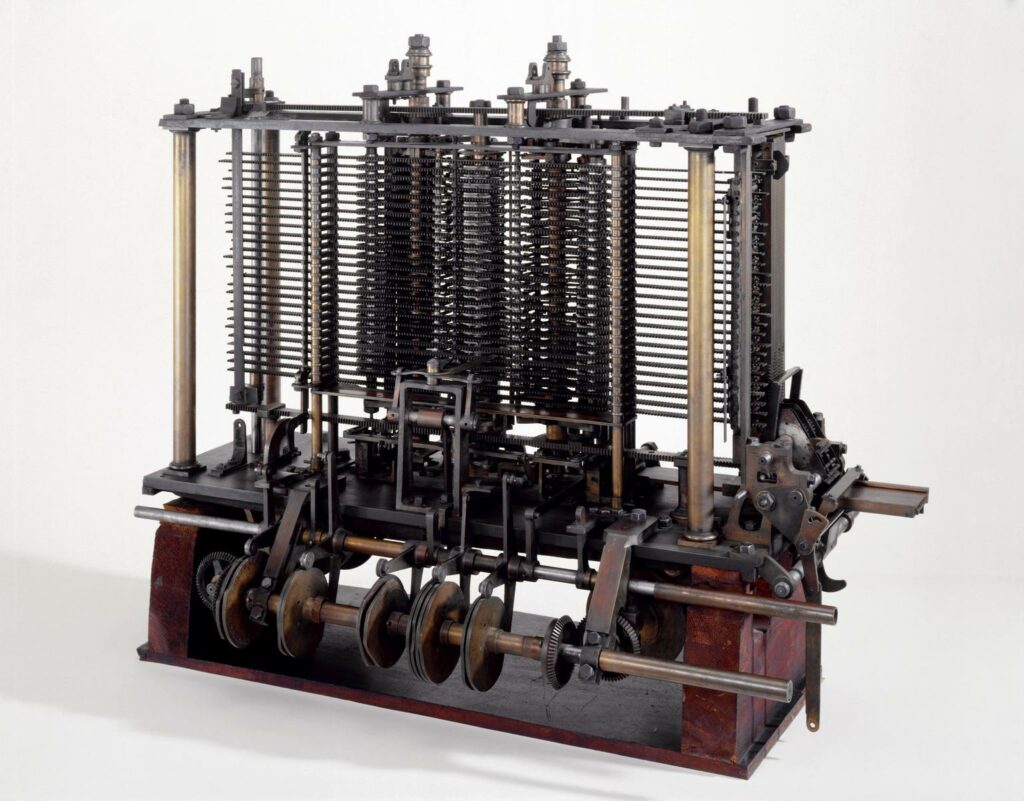
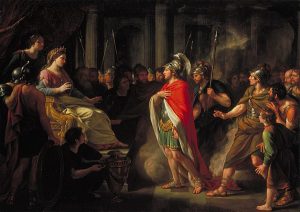
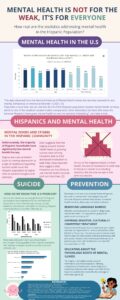
1 comment
Esteban Serrano
Great and informative article. Congrats on your nomination, Gianna! I really liked the story of this and how his machine and her writing became a staple in history. I think it is also cool how the government named a high-tech computer after Ada back in the 80’s.